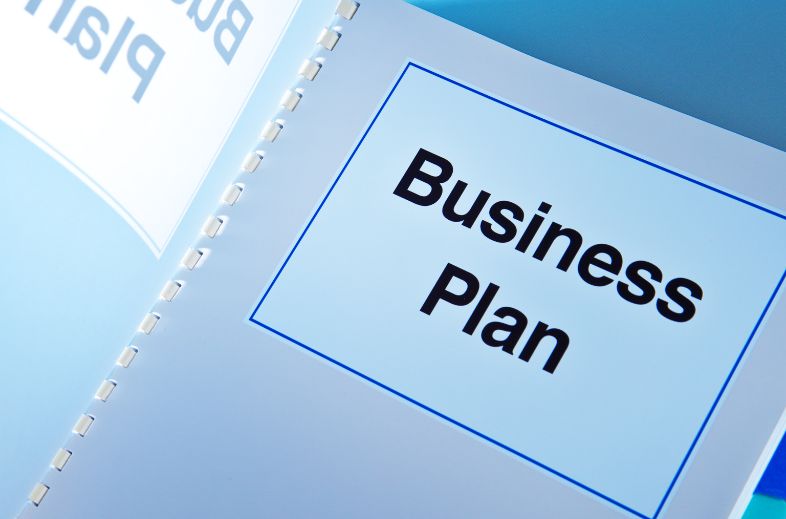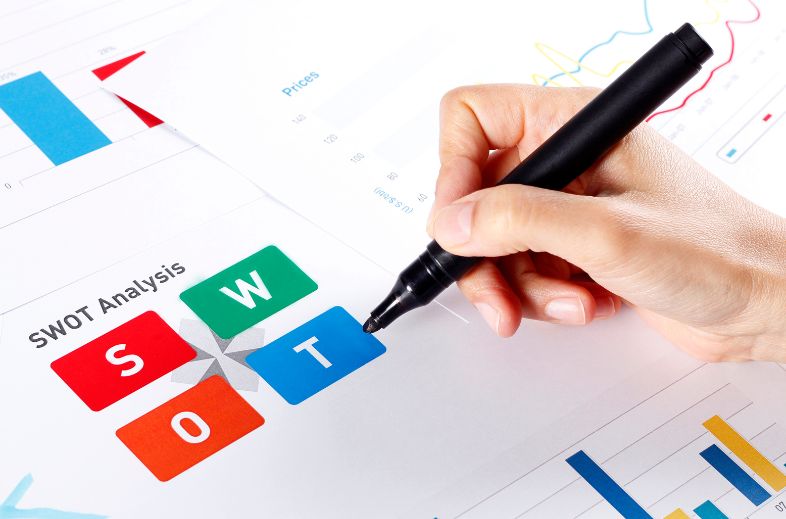Are you thinking of starting a reselling business? Great idea! Not only is reselling a fantastic way to make some extra money, but it’s also a great way to get rid of unwanted items and make a bit of space in your home.
Before you get started, though, it’s important to create a reselling business plan. This will help you define your goals, choose the right products to sell, and set up systems to streamline your business.
You might be feeling overwhelmed at the thought of creating a business plan. Don’t worry! This step-by-step guide will help you create a reselling business plan that will set you up for success.
What is a Reselling Business Plan
A reselling business plan is a document that outlines the goals, strategies, and objectives of a reselling business. It is typically created by the business owner or a team of reselling experts. The purpose of a reselling business plan is to provide a roadmap for the business so that it can be successfully launched and operated.

There are many different elements that should be included in a reselling business plan. Some of the most important elements include:
1) Executive Summary
An executive summary is a brief overview of the business, its goals, and its strategies. It should be no more than one or two pages long. The purpose of an executive summary is to provide a brief overview of the plans, objectives, and potential benefits, and to convince potential investors or lenders that the plan is worth investing in.
2) Company Description
This section provides more detail about the company, including its history, mission statement, and any unique selling points. It should include an overview of what your business does, as well as your company’s goals and objectives. It should also provide a brief history of your company, including any milestones you’ve achieved. Lastly, your company description should give a general idea of the products and services you offer.
3) Products and Services
This section outlines the reselling products and services that the company will offer. It should include information about the target market, pricing strategy, and product positioning.
4) Marketing Plan
A marketing plan is an important part of any reselling business plan. This section outlines the company’s marketing strategy, including its advertising and promotion plans. It should also include information about the sales channels that will be used to reach customers.
Here are some tips for making a successful marketing plan:
- Research your target market. This is essential in order to understand what motivates them, what their needs and wants are, and how best to reach them.
- Develop a unique selling proposition (USP). This is what sets you apart from the competition and will make customers want to buy from you instead of anyone else.
- Create a marketing mix. Make sure to include the right mix of traditional and digital marketing tactics. Make sure you allocate enough budget to each so that you can execute effectively.
- Measure and track your results. This will help you continually improve your marketing strategy. This data will help you make informed decisions about where to allocate your resources for the best return on investment.
5) Competitor Analysis
This involves studying your potential competitors to see what they are doing well, and where they may be vulnerable. Competitor analysis can help you to:
- Find gaps in the market that you can exploit
- Develop strategies to differentiate your products or services
- Price your products or services competitively
- Build a more robust marketing plan
6) Operational Plan
This section outlines the company’s operational procedures, including the manufacturing process, fulfillment process, customer service process, etc. In this section, you’ll need to include a few key points:
- How you will acquire inventory – Will you buy from wholesalers, manufacturers, or other retailers?
- How you will store your inventory – Do you have a warehouse or storage space set up?
- How you will fulfill orders – Will you ship products yourself or use a fulfillment service?
- How you will advertise and market your products – Which online platforms will you use to reach your target market?
- What kind of customer service policies and procedures you will have in place – How will you handle returns and refunds?
6) Financial Plan
This section outlines the company’s financial projections, including revenue streams, expenses, and profitability. It should also include information about funding requirements and capitalization plans. At this point, consideration can also be given to whether a business account is needed. Separating private and business expenses can be helpful if loans are to be taken out at a later date.
7) SWOT Analysis
This will help you identify the Strengths, Weaknesses, Opportunities, and Threats associated with your business.
- Strengths: What are the unique selling points of your business? What do you do better than anyone else?
- Weaknesses: What are some potential areas of improvement for your business? Are there any areas where you are vulnerable?
- Opportunities: What trends or changes in the market could you capitalize on? Are there any new customer segments you could target?
- Threats: What could potentially harm your business? Are there any competitors that pose a threat?

Why you need a reselling business plan
The purpose of a reselling business plan is to articulate a clear and concise strategy for how the organization will go about acquiring and selling products or services in order to generate profit. It is a great way to get feedback from potential investors, customers, and partners. It can also be a valuable tool for managing and growing your business.
Here are a few reasons why you should create a reselling business plan:
- It will force you to think through all aspects of your business
- It will help you identify your target market and understand your competition
- It will help you set realistic goals and track your progress over time
- It will give you a roadmap for success
- It will make it easier to get funding from investors or lenders
Create Reselling Business Plan: Step-by-step guide
Without a reselling business plan, it’s easy to get off track or make decisions that are not in line with your overall goals. So take the time to create a comprehensive reselling business plan before you get started. So, now that you know the importance of a business plan, let’s take a look at how to create one.
Step one: Define your business model
As with any new business venture, it’s important to have a solid plan in place before you get started. When it comes to reselling, this means having a clear understanding of your business model and how you plan to make money.
There are a few different types of business models for resellers:
1. Wholesale model
In a wholesale model, you purchase products in bulk from suppliers and then sell those products to retailers or other businesses. It is a popular choice for businesses that want to be able to sell large quantities of products at a lower price point. This type of business model requires a strong relationship with suppliers, as well as the ability to move products quickly.
One of the advantages of the wholesale model is that businesses can enjoy economies of scale, which means they can produce products more cheaply than if they were selling smaller quantities. Another advantage is that businesses can reach a wider range of customers by selling through wholesalers. However, there are some disadvantages to the wholesale model as well, such as the fact that businesses have less control over their product and pricing.
2. Drop shipping model
A dropshipping model is a business model where you sell products that you don’t have in stock. When a customer orders a product from your store, you simply contact the supplier, who will then ship the product directly to the customer’s door. Dropshipping is a great way to start an online business with little up-front investment, and it can be very profitable. This is also applicable for reselling seasonal products.
There are a few things to keep in mind if you’re thinking of starting a dropshipping business:
- You’ll need to find reliable suppliers who can provide good quality products at a reasonable price.
- You’ll need to create good product descriptions and take great product photos to make your store look professional and trustworthy.
- You’ll need to be prepared to handle customer service inquiries and returns, as you’ll be the one responsible for dealing with the customer directly.
Dropshipping can be a great way to start your own business with very little up-front investment.
3. Affiliate marketing model
In an affiliate marketing model, you promote other companies’ products online through affiliate programs. When customers purchase those products through your links, you earn a commission on the sale.
This model has several advantages for reselling businesses. Firstly, it enables businesses to reach a wider audience than they would be able to through their own marketing efforts. Secondly, it allows businesses to tap into the expertise of affiliates who are experienced in promoting and selling products or services. Finally, it provides an additional revenue stream for businesses.
There are also some disadvantages to affiliate marketing. For example, it can be difficult to build trust with customers if they feel that they are being sold to by an intermediary. Additionally, affiliate marketing can be risky if businesses don’t carefully select their affiliates and monitor their performance.
Take some time to figure out which model makes the most sense for you. No matter what approach you take, remember that a key part of successful reselling is providing value to your customers.
Step two: Identify your reselling niche
As you continue to craft your reselling business plan, it’s important to zero in on the type of products you’ll be focusing on. This is your “reselling niche.” By identifying your reselling niche, you’ll be able to market your business and attract customers who are interested in what you’re selling.
There are a few factors to consider when choosing your reselling niche:
- What types of products are you passionate about?
- What types of products are in high demand?
- What types of products can you source easily and affordably?
Once you’ve considered these factors, you should have a good idea of the types of products you’ll be focusing on. From there, you can start to develop a marketing strategy and build out your business plan.

Step three: Determine your goals and objectives
The next step is to determine your goals and objectives. What do you want to achieve with your business? Do you want to make a full-time income? Do you want to supplement your current income? Do you want to create a passive income stream?
Once you know what you want to achieve, you can start setting some specific goals. How much money do you want to make in your first year? What kind of margins are you aiming for? How many products do you want to sell?
Creating specific, measurable goals will help you track your progress and keep yourself on track. Without a goal, it will be difficult to measure your success and determine if your business is profitable.
Step four: Outline your marketing and promotion strategy
As you develop your reselling business plan, be sure to include a detailed marketing and promotion strategy. This will be critical to your success in driving traffic to your store and generating sales.
There are a number of ways to market and promote your reselling business. Below are some ideas to get you started:
- Develop a strong social media presence. Be sure to create accounts on all the major social media platforms and post regularly. Use attractive visuals and compelling content to draw attention to your store.
- Engage in online advertising. Google AdWords and other online advertising platforms can be effective in driving traffic to your store.
- Develop partnerships with other businesses. Forming partnerships with complementary businesses can help to increase exposure for your store. For example, if you sell vintage clothing, partnering with a local thrift store could be a great way to drive traffic to your store.
- Participate in local events and markets. Attend local events and markets where you can set up a booth or table to sell your items. This is a great way to meet potential customers and generate interest in your store.
Step five: Develop a financial projection
The next step is to develop a financial projection for your reselling business. This will help you determine how much money you need to start your business, as well as estimate your potential profits.
There are a few things to keep in mind when creating your financial projection:
- How much will it cost to produce your product or deliver your service? This includes the cost of materials, labor, and any other expenses associated with providing your product or service.
- How much will you charge for your product or service? Be sure to consider the competition and what they are charging for similar products or services.
- How many units do you expect to sell? This will depend on a number of factors, including your marketing efforts and the overall demand for your product or service.
- What are your estimated operating expenses? This includes things like rent, utilities, insurance, and other general business expenses.
- What are your estimated profits? This is the bottom line – how much money do you expect to make from your reselling business?
Once you have all of this information, you can start to put together a financial projection for your business. This will give you a good idea of how much money you need to get started and how profitable your business could be.
Step Six: Draft your reselling business plan
Now that you’ve done all of the research and planning, it’s time to put it all down in writing. Your business plan should include all the important elements mentioned in this guidebook.
Once you’ve got your business plan written out, it’s time to get started on making your dreams a reality. Start by taking some small steps and working towards your goals one at a time. Soon enough, you’ll have a thriving reselling business up and running!

Conclusion
If you want to start a reselling business, congratulations! You’re about to embark on a rewarding and exciting journey. But before you get started, it’s important to create a reselling business plan.
Creating a reselling business plan is a great way to get your business started on the right foot. By taking the time to sit down and map out your goals, you can ensure that you are making the most of your opportunities and setting yourself up for success. While it may seem like a lot of work, a reselling business plan can be a helpful tool that will keep you organized and on track as you start your journey in the world of reselling.
This step-by-step guide will show you how to do just that, so you can hit the ground running and set your business up for success. Good luck!

